<< Previous | Displaying results 501-550 of 1298 for "nazi germany" | Next >>
April 11, 1945. On this date, the US Army liberated the Dora-Mittelbau (Nordhausen) concentration camp in Germany.
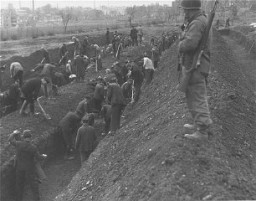
A diagram showing the medical chain of command in the Third Reich, drawn up as evidence for the Doctors Trial. Nuremberg, Germany, December 1946.
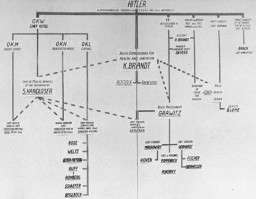
Caricature of Nuremberg International Military Tribunal defendant Alfred Rosenberg, by the German newspaper caricaturist Peis. Nuremberg, Germany, October 1, 1946.
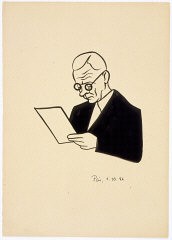
September 15, 1935. On this date, the Nazi government passed the Nuremberg Race Laws, making Jews legally different from their non-Jewish neighbors.
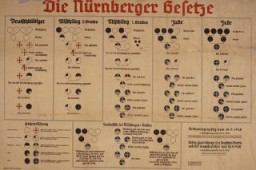
On May 10, 1933, Nazi students at universities across Germany pillaged and burned books they claimed were “un-German.” Ernest Hemingway’s
Defendant Alfred Rosenberg, the former chief Nazi Party ideologist, reads a document during the International Military Tribunal trial of war criminals at Nuremberg. Behind him is his co-defendant General Alfred Jodl, formerly the Chief of Staff for the Army. Nuremberg, Germany, 1945–1946.
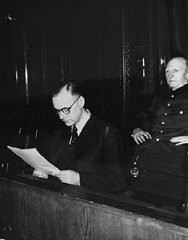
Members of the Storm Troopers (SA), with boycott signs, block the entrance to a Jewish-owned shop. One of the signs exhorts: "Germans! Defend yourselves! Don't buy from Jews!" Berlin, Germany, April 1, 1933.
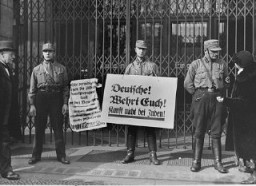
The defendants and their lawyers at the International Military Tribunal trial of war criminals at Nuremberg. Defendant Albert Speer (standing at right) delivers a statement in the dock. Nuremberg, Germany, November 20, 1945-October 1, 1946.
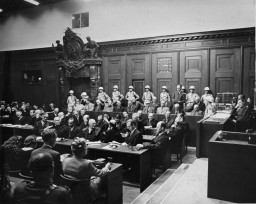
Zigmond Adler was three years old when Germany occupied Belgium in May 1940. Zigmond, whose mother was deceased, went to live with his aunt and uncle after the Germans deported his father. With the help of Catholic friends, Zigmond and his relativ...
A waiter from Düsseldorf who was arrested by the Gestapo for allegedly having sexual relations with other men. Düesseldorf, Germany, 1938. [RW 58-61940] The Nazi regime considered homosexuality a moral vice that threatened the current and future strength of the German people. They carried out a campaign against male homosexuality that included shutting down gay and lesbian meeting places and arresting men under Paragraph 175, the statute of the German criminal code that banned sexual relations between…
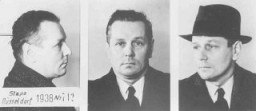
April 12, 1945. On this date, Canadian forces liberated prisoners at the Westerbork camp in the Netherlands.
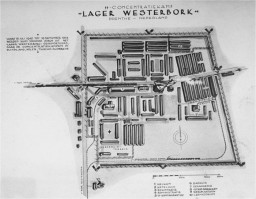
Explore this question to learn about the responses of leaders and citizens
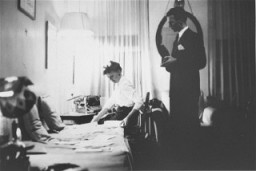
The leaders of Nazi Germany, a modern, educated society, aimed to destroy millions of men, women, and children because of their Jewish identity. Understanding this process may help us to better understand the condit...
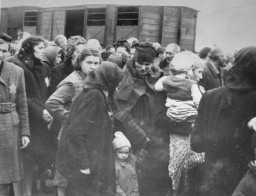
Leading German officials were tried before the International Military Tribunal (IMT) in Nuremberg, Germany. The IMT consisted of judges from Great Britain, France, the Soviet Union, and the United States. The overwhelming majority of post 1945 war crimes trials, however, involved lower-level officials and officers. Among them were concentration camp guards and commandants, police officers, members of the mobile killing squads, and doctors who participated in medical experiments. These war criminals were…

On May 10, 1933, Nazi students at universities across Germany pillaged and burned books they claimed were “un-German.” The targeted books were those they deemed contrary to Nazi goals and beliefs. The book burnings are an example of the regime's eff...
On May 10, 1933, Nazi students at universities across Germany pillaged and burned books they claimed were “un-German.” The targeted books were those they deemed contrary to Nazi goals and beliefs. The book burnings are an example of the regime's eff...
How involved in the Holocaust were German professionals and civil leaders? What were some of the motivations and pressures that led to a wide range of behavior? What indeed was the range of behavior, from complying to perpetrating? Explore...
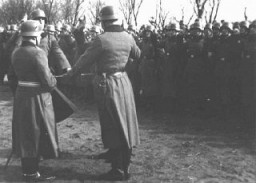
Learn more about Nazi Germany’s response to the “Jewish question,” an antisemitic idea that the Jewish minority was a problem that needed a solution.
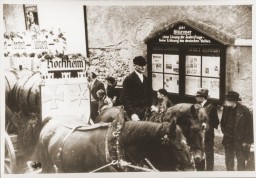
Antisemitism: hostility toward or hatred of Jews as a religious or ethnic group, often accompanied by social, economic, or political discrimination. Appellplatz: German word for roll call square where prisoners were forced to assemble. Aryan: Term used in Nazi Germany to refer to non-Jewish and non-Roma (Gypsy) Caucasians. Northern Europeans with especially "Nordic" features such as blonde hair and blue eyes were considered by so-called race scientists to be the most superior of Aryans, members of a…
The Hitler Youth and the League of German Girls were developed as Nazi Party youth groups to indoctrinate children and youth in Nazi ideology and policy.
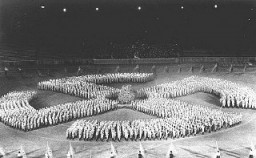
Efforts to bring the perpetrators of Nazi-era crimes to justice continue into the 21st century. Learn more about postwar trials and their legacies.
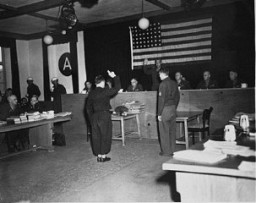
Léon Degrelle was an extreme right-wing Belgian politician and Nazi collaborator. After the war, he continued to spread pro-Nazi propaganda for decades. Learn more.
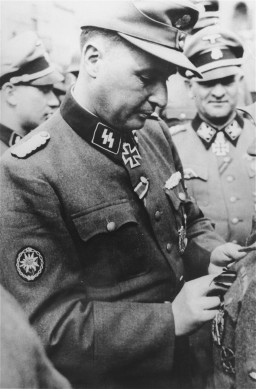
After rising to power, the Nazis eliminated freedom of the press in Germany. Learn more about how they established control over the press and manipulated it.
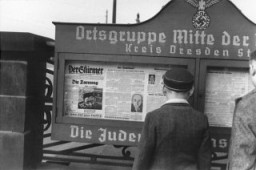
By the process of "Aryanization" in Nazi Germany from 1933 to 1945, Jewish-owned businesses and property were transferred to non-Jews. Learn more.
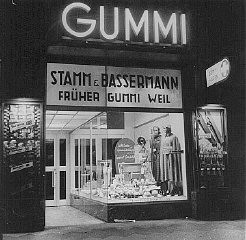
The Nazis frequently used propaganda to disguise their political aims and deceive the German and international public. Learn more.
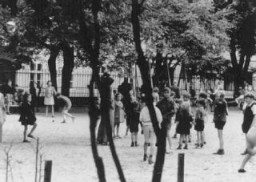
Adolf Hitler came to power with the goal of establishing a new racial order in Europe dominated by the German “master race.” This goal drove Nazi foreign policy. Learn more
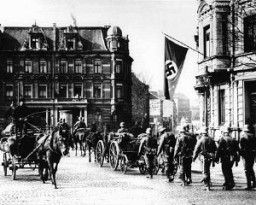
Hitler's political opponents were the first victims of systematic Nazi persecution. They were incarcerated without trial and under conditions of great cruelty.
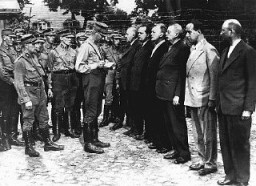
The Security Police (Sicherheitspolizei, SiPo) was a German police organization created by Heinrich Himmler. Learn about its origin and role in the Holocaust.

In July 1938, 32 nations met in Evian, France, to discuss immigration policies for Jewish refugees fleeing Nazi Germany. Learn how these discussions impacted Jewish lives.
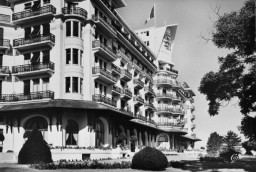
Is the “Final Solution” the same as the Holocaust? Did the Nazis always plan to murder the Jews? Learn the answer to these and other questions about the Nazi “Final Solution.”
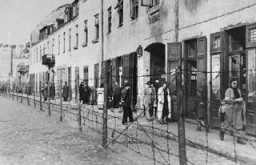
The Order Police (Ordnungspolizei, Orpo) were Nazi Germany’s uniformed police forces. They became perpetrators of horrific crimes and played a significant role in the Holocaust.
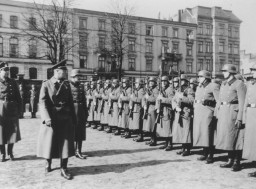
Each of Germany’s six European Axis allies participated in the “Final Solution” by murdering Jews or by transferring them to German custody. Learn more.
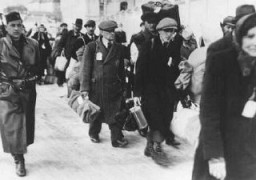
Often referred to as the “eastern front,” the German-Soviet theater of war was the largest and deadliest of World War II. Learn more about the background and key events.
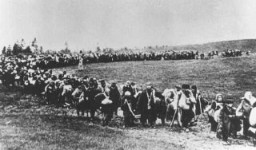
The SS (Schutzstaffel) was the elite guard of the Nazi regime and a virtual state within the Third Reich.
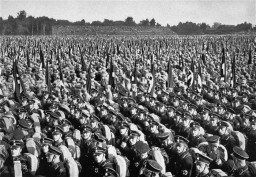
The Riegner telegram detailed the Nazi plan to systematically murder European Jews. It was sent to the British and American governments in August 1942.
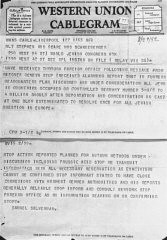
Survivor Elie Wiesel devoted his life to educating the world about the Holocaust. Learn about key events in the world and his life from 1928–1951.
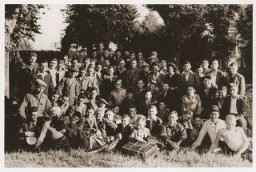
At the Nuremberg trials, Allied prosecutors submitted documentation left by the Nazi state itself. This evidence is a lasting refutation of attempts to deny the Holocaust.

In 1933, Nazi students at more than 30 German universities pillaged libraries in search of boo...
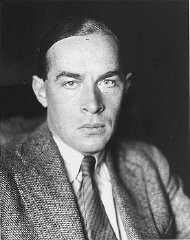
Franklin D. Roosevelt was 32nd president of the US. Learn about the domestic and international challenges FDR faced as president during World War II.
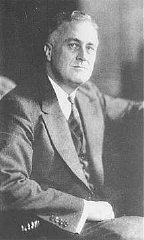
Adolf Hitler's Mein Kampf (My Struggle) is the best known and most popular Nazi text ever published with over 12 million copies sold from 1925 to 1945.
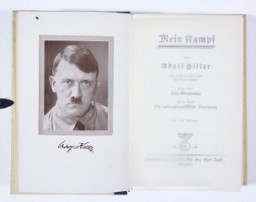
Throughout the 1930s and 40s, Nazi Germany invaded much of Eastern and Western Europe. Learn more about German rule in occupied territories.
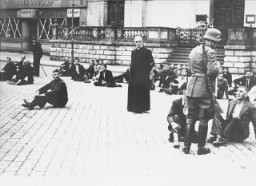
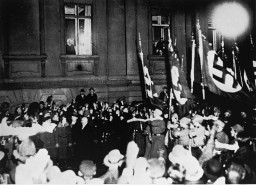
The D-Day invasion was the largest amphibious attack in history. Read articles and browse photos and videos of Allied forces invading Normandy on June 6, 1944.
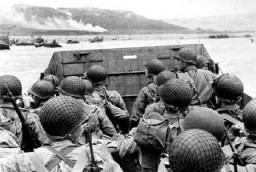
Explore a timeline of key events in the history of Nazi Germany during 1938.
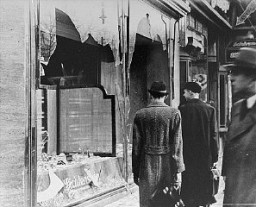
Robert Ritter was a German doctor whose work helped drive the development of the Nazi regime’s anti-Romani policies of persecution and genocide.

Nazi Germany’s territorial expansion and the radicalization of Nazi anti-Jewish policies triggered a mass exodus. Learn about the US and the refugee crisis of 1938–41.
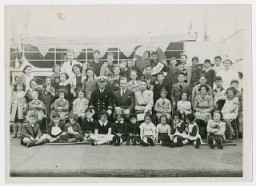
The German Foreign Office played an integral role in Nazi anti-Jewish policies and the Holocaust. Learn more about the office's responsibilities during that time.
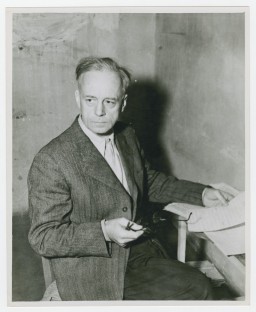
The German invasion of Poland in the fall of 1939 triggered WWII. Learn more about key dates and events, causes, and related Holocaust history.
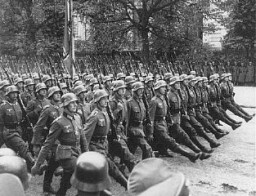
Trials of top surviving German leaders for Nazi Germany’s crimes began in Nuremberg after World War II. Read about the Nuremberg trials.
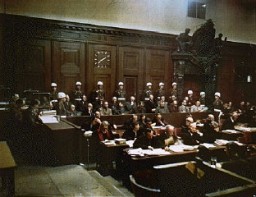
Communist ideas spread rapidly in Europe during the 19th and 20th centuries, offering an alternative to both capitalism and far-right fascism and setting the stage for a political conflict with global repercussions.
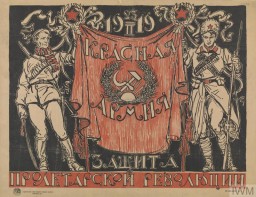
We would like to thank Crown Family Philanthropies, Abe and Ida Cooper Foundation, the Claims Conference, EVZ, and BMF for supporting the ongoing work to create content and resources for the Holocaust Encyclopedia. View the list of donor acknowledgement.